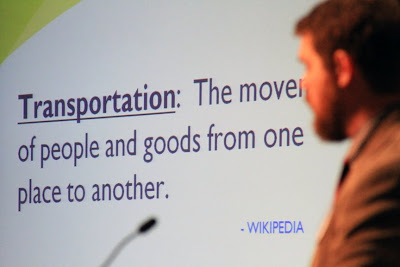The American Marketing Association (AMA) is hosting a luncheon this Friday, April 16 from 11:30am to 1:15pm that will feature a presentation from Brian Meyers on the future of design and marketing.
Meyers is a Senior Trends Analyst with Cincinnati-based LPK, and is known for his forecasting and strategic analysis of emerging trends by predicting shifts in consumer behavior for the brand management firm. Trend forecasting is often used by industry leaders to help develop consumer and market brands.
According to Meyers, his presentation “Memo from 2015: What the Future Wants from a Marketer” will challenge many conventional marketing tactics used today and is intended to provoke Cincinnati’s local marketing community to think about how marketers and designers adapt and evolve in an ever-changing environment.
Due to his relatively young age and topic on evolving socio-cultural trends, Meyers is a different presenter for an AMA luncheon event. His presentation “Memo from 2015: What the Future Wants from a Marketer” is intended to provoke our local marketing community to think about how we as marketers and designers can adapt and evolve with rapidly evolving trends.
“The objective of this presentation is not accuracy, but provocation – proactive cogitation that will lead to thoughtful action and manifestation of a better future,” Meyers explained. “How will we adapt or evolve to fill the new role the future has in mind for us?”
Meyers’ presentation will focus on emerging trends like the Simplistic Slowdown, New Economies and the On-line/Off-line Blur. Correspondingly, the following six paradigm shifts will also be discussed about how they will impact marketing.
- People Don’t Buy Much Any More
- People Utilize Alternative Economies
- People Become Their own Producers and Marketers
- Technology turns from Tool to Automated Competition
- Seamless Digital/Physical Reality Alters How People Live
- Decoding the Brain Up-Ends Ideas of Logic and Reason
Marketing and brand development is seen as one of Cincinnati’s strongest industries with consumer product giants like Procter & Gamble, Kroger, Macy’s and Chiquita all headquartered in the city. The industry is also one that seems poised for growth in an increasingly consumer-based economy that is rapidly changing.
UrbanCincy readers interested in attending have been extended a special offer for the luncheon. Starting today, UrbanCincy readers are able to reserve their luncheon spot for the special membership rate of $35 by registering online and entering “UrbanCincy” into the comment box. This discount will only be valid online and not at the door. The event is being held at the Cintas Center (map) on Xavier University’s campus, with parking available in Lot C next to the arena (no parking voucher is necessary).


